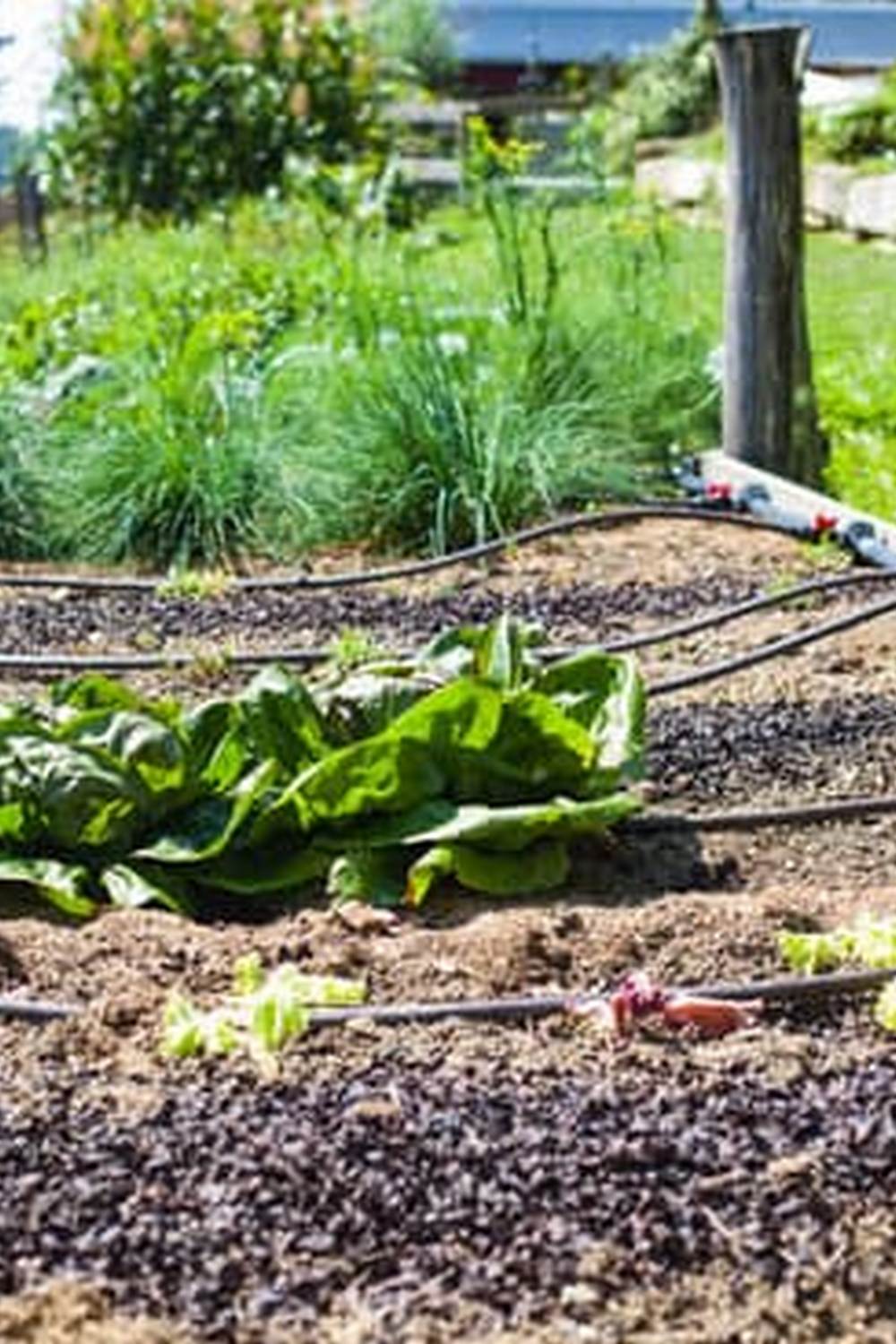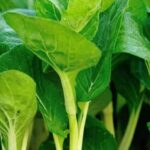Are you wondering when to plant vegetables? Making sure you plant your vegetables at the right time is crucial for a successful harvest. In this article, we will explore the importance of planting vegetables at the right time and provide tips for understanding your climate, choosing the best time to plant, preparing your soil, and maintaining your garden.
One of the key factors in determining when to plant vegetables is understanding your climate. Different regions have different planting schedules based on their unique climate patterns. By understanding your climate, you can optimize your planting times for a bountiful harvest.
Knowing the best time to plant specific types of vegetables is essential for a successful garden. Each type of vegetable has its own optimal growing conditions and planting window. By learning the best timing for different types of vegetables, you can ensure that they have the best chance of thriving in your garden. Whether you are growing tomatoes, lettuce, or carrots, understanding when to plant each vegetable is crucial for a successful harvest.
Understanding Your Climate
Different regions have different climate patterns and weather conditions that can significantly affect the best times for planting vegetables. It is essential to understand your local climate in order to determine the most suitable planting schedule for your area.
For example, individuals living in the Pacific Northwest might experience cooler temperatures and more rainfall, while those in the Midwest may have hotter summers and milder winters. These variations will impact when certain vegetables should be planted for optimal growth.
In general, it is important to research the average last frost date in your region as it will help you determine when it is safe to plant warm-season vegetables such as tomatoes, peppers, and squash. Additionally, knowing the first frost date will allow you to plan for a fall harvest of cool-season crops like lettuce, carrots, and spinach. By understanding your specific climate and its planting schedules, you can ensure a successful vegetable garden.
| Region | Last Frost Date | First Frost Date |
|---|---|---|
| Pacific Northwest | April 15th | October 15th |
| Midwest | May 1st | September 30th |
The Best Time to Plant
When it comes to planting vegetables, timing is everything. Different types of vegetables have specific timing requirements for optimal growth and yield. By understanding the best time to plant each type of vegetable, you can maximize the success of your garden.
Early Spring Vegetables
Some vegetables thrive when planted early in the spring. These include lettuce, spinach, peas, and radishes. These cool-season vegetables can tolerate colder temperatures and should be planted as soon as the soil can be worked in the spring.
Warm Season Vegetables
Vegetables such as tomatoes, peppers, cucumbers, and squash require warmer temperatures to thrive. These warm-season vegetables should be planted after the last frost date in your area. Planting them too early can result in stunted growth or damage from cold weather.
Fall Vegetables
For a late-season harvest, consider planting fall vegetables such as carrots, beets, kale, and broccoli. These vegetables can handle cooler temperatures and should be planted in late summer for a bountiful fall harvest.
By understanding the specific timing requirements for different types of vegetables, you can optimize your gardening efforts and enjoy a successful harvest. Be sure to consult a local gardening guide or extension office for more information on the best time to plant vegetables in your area.
Preparing Your Soil
Testing Your Soil
Before you start planting your vegetables, it’s important to test your soil to understand its nutrient levels and pH. You can purchase a simple soil testing kit from your local gardening store or send a sample to a professional lab for more detailed analysis. Knowing the composition of your soil will help you determine what amendments, if any, are needed to create the best growing conditions for your vegetables.
Amending Your Soil
Once you have the results of your soil test, you can make the necessary adjustments by adding organic matter, such as compost or well-rotted manure, to improve the soil structure and fertility. You may also need to adjust the pH level by adding lime to raise it or sulfur to lower it, depending on the needs of the specific vegetables you plan to plant. Be sure to thoroughly mix in any amendments before planting.
Cultivating and Mulching
After amending your soil, take the time to cultivate it by loosening any compacted areas with a garden fork or tiller. This will improve aeration and drainage, creating an ideal environment for plant roots. Once this is done, apply a layer of mulch around your plants to help regulate soil temperature, reduce water evaporation, and suppress weed growth. Taking these steps will ensure that your soil is ready for healthy vegetable growth throughout the growing season.
Planting Techniques
When it comes to gardening, knowing the right planting techniques for different types of vegetables is essential for a successful harvest. Each type of vegetable has its own specific requirements when it comes to planting, and understanding these techniques can make a big difference in the health and yield of your crops.
One important factor to consider when planting vegetables is the spacing between plants. Some vegetables, such as tomatoes and peppers, require more space to grow and thrive, while others, like lettuce and spinach, can be planted closer together. It’s important to research the specific spacing requirements for each type of vegetable to ensure that they have enough room to grow properly.
Another key planting technique is understanding the depth at which each type of vegetable should be planted. For example, root vegetables like carrots and radishes need to be sown at a shallower depth, while other vegetables like onions and potatoes require deeper planting. Getting the planting depth right is crucial for the development of healthy root systems and overall plant growth.
Additionally, paying attention to proper watering techniques is vital when it comes to successful planting. Some vegetables need consistent moisture throughout their growing period, while others prefer drier conditions. Understanding the specific watering needs of each vegetable can help prevent issues such as overwatering or underwatering, leading to healthier plants and better yields.
| Vegetable | Spacing | Planting Depth |
|---|---|---|
| Tomatoes | 24-36 inches apart | 1/2 inch deep |
| Lettuce | 6-12 inches apart | 1/4 inch deep |
Seasonal Considerations
When it comes to gardening, understanding the seasonal considerations is crucial for successful vegetable planting. Weather and temperature play a significant role in determining the best time to plant different types of vegetables. It’s important to consider the following factors before starting your vegetable garden:
1. Frost Dates: Knowing the average last spring frost date and the first fall frost date in your area is essential for planning your planting schedule. This information will help you determine the ideal time to start planting specific vegetables.
2. Temperature Tolerance: Different vegetables have varying temperature tolerances. Some can withstand cooler temperatures, while others require warmer conditions to thrive. Understanding these tolerances will guide you in choosing the right timing for planting each type of vegetable.
3. Seasonal Changes: Be mindful of how weather patterns are changing due to climate change. It’s important to stay updated on any shifts in weather patterns that may affect traditional planting times in your region.
Taking these seasonal considerations into account will help you make informed decisions about when to plant vegetables in your garden, maximizing the chances of a successful harvest.
In addition, keeping an eye on local weather forecasts and trends will also assist you in adjusting your planting schedule as needed, ensuring that your vegetables have the best possible growing conditions. With careful attention to seasonal considerations, you can optimize your vegetable garden for a bountiful yield.
Maintenance and Care
Once you’ve planted your vegetables, the work is not over. Proper maintenance and care are essential to ensure a successful harvest. Here are some tips to help you tend to your vegetable garden after planting:
1. Watering: It’s important to water your vegetables regularly, especially during dry periods. Different types of vegetables have different water needs, so make sure to research the specific requirements for each plant. As a general rule of thumb, most vegetables need about 1 inch of water per week.
2. Weeding: Regular weeding is crucial to keep your vegetable garden healthy. Weeds can compete with your plants for water and nutrients, so it’s important to remove them as soon as they appear. Consider using mulch to help prevent weed growth and retain soil moisture.
3. Pest Control: Keep an eye out for pests that may damage your vegetable plants. Inspect your garden regularly for signs of insects or other pests, and take appropriate measures to control them. This could include hand-picking insects, using organic pesticides, or introducing beneficial insects that prey on pests.
4. Fertilizing: Depending on the type of soil you have and the specific needs of the vegetables you’re growing, you may need to fertilize your garden periodically. Conduct a soil test to determine if any specific nutrients are lacking in your soil, and then apply fertilizer accordingly.
By following these maintenance and care tips, you can ensure that your vegetable garden thrives after planting, leading to a bountiful harvest of fresh, homegrown produce.
Common Mistakes to Avoid
In conclusion, understanding the importance of planting vegetables at the right time is crucial for a successful and bountiful garden. Different regions have specific planting schedules based on their unique climates, so it’s essential to know your local climate and its impact on planting times. Knowing the best time to plant different types of vegetables is key to ensuring a thriving garden, as each vegetable has its own specific timing for optimal planting.
In addition to timing, preparing your soil and using proper planting techniques are vital for successful vegetable gardening. Ensuring that your soil is well-prepared and nutrient-rich will provide a healthy foundation for your plants to thrive. Likewise, using the appropriate planting techniques for each type of vegetable will help maximize their growth and yield.
Furthermore, it’s important to consider seasonal variations such as weather and temperature when planning your vegetable garden. These factors can significantly affect the ideal timing for planting, so being mindful of seasonal considerations can greatly impact the success of your garden. Lastly, ongoing maintenance and care are crucial for tending to your vegetable garden after planting. By avoiding common mistakes and pitfalls when planting vegetables, you can set yourself up for a successful and rewarding gardening experience.
Frequently Asked Questions
What Month Should I Plant My Vegetable Garden?
The month you should plant your vegetable garden depends on the specific vegetables you want to grow and the climate of your region. Generally, cool-season crops like lettuce and spinach can be planted early in the spring, while warm-season crops like tomatoes and peppers should be planted after the last frost date.
What Happens if You Plant Vegetables Too Early?
If you plant vegetables too early, they may be at risk of damage from frost or cold temperatures. This can stunt their growth, delay or reduce their yield, or even kill the plants altogether. It’s important to wait until the threat of frost has passed before planting.
What Is the Earliest You Can Plant Vegetables?
The earliest you can plant vegetables also varies depending on your region and the specific crops you want to grow. Some cold-hardy vegetables like peas and kale can be planted as soon as the soil can be worked in early spring, while others may need to wait until a few weeks after the last frost date.
Be sure to consult local gardening resources or extension offices for specific planting guidelines in your area.

If you’re looking to get into vegetable gardening, or are just looking for some tips on how to make your current garden better, then you’ve come to the right place! My name is Ethel and I have been gardening for years. In this blog, I’m going to share with you some of my best tips on how to create a successful vegetable garden.





